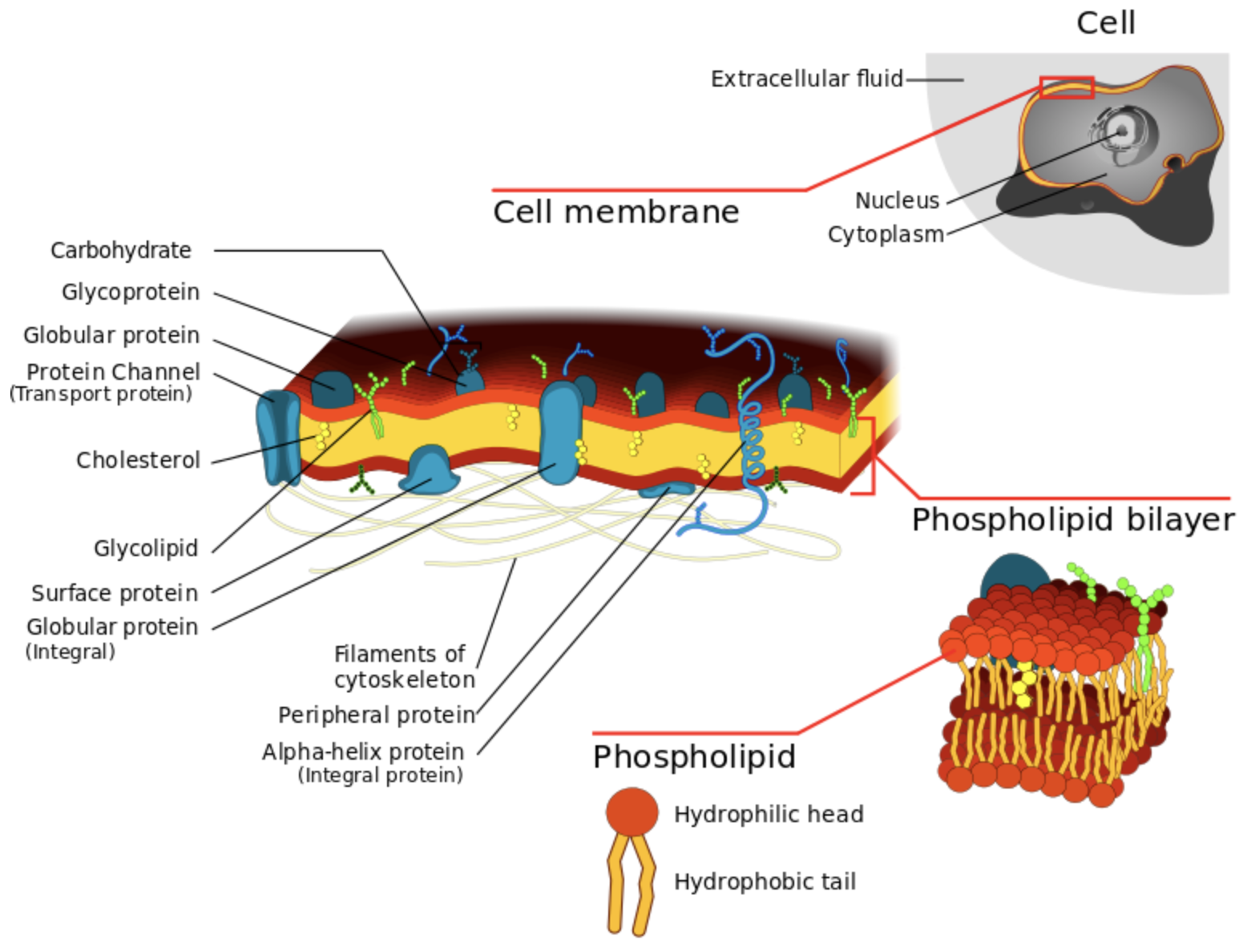
Fluid mosaic model of cell membrane proposed that a lipid bilayer
(a) Is coated by a layer of proteins on each face.
(b) Is coated by a layer of proteins on the outer surface only
(c) Has protein embedded on itself and none on the surface
(d) Has both embedded and outer proteins
Answer
553.2k+ views
Hint: According to the Fluid Mosaic Model, cell membranes are quasi fluidic in nature with a viscous lipid bilayer having proteins at places like a mosaic. Singer and Nicolson have described cell membranes as 'protein icebergs' in the sea of lipids.
Complete answer:
Membrane proteins remain partially or completely inside or outside the lipid bilayer. The fluid mosaic model proposed by singer and Nicholson in 1972, is an ingenious explanation of molecular architecture and functional properties of the plasma membrane. According to it, the plasma membrane is a two-dimensional quasi fluid solution of organized lipids and globular proteins.

According to it, phospholipid molecules have a continuous arrangement. They are arranged side by side and back to back in two parallel rows, forming a continuous lipid bilayer. The lipid bilayer forms the structural framework of the membrane. Very often, cholesterol occurs tightly bound with phospholipids. Membrane proteins are randomly dispersed and discontinuous. They remain partially or completely inside or outside the lipid bilayer. The proteins which are completely outside the lipid bilayer are called extrinsic or peripheral proteins, and those which penetrate the lipid bilayer are called intrinsic or integral proteins.
Additional Information:
- Some integral proteins span the entire lipid bilayer. They are called transmembrane proteins.
- They form pores through the membrane and also transmit signals from one surface of the membrane to the other.
- Intrinsic proteins usually float and freely move within the lipid matrix, just as ice- berg floats and drifts in an open sea.
So, the correct answer is '(d) Has both embedded and outer proteins’.
Note:
- Extrinsic proteins are hydrophilic. They bind with the membrane surface by electrostatic interactions and hydrogen bonding.
- Most intrinsic proteins are amphipathic. Their hydrophobic portion resides within the lipid bilayer, and the hydrophilic part projects out of the lipid bilayer.
- In the fluid mosaic organization, Carbohydrates are entirely outside the lipid bilayer.
Complete answer:
Membrane proteins remain partially or completely inside or outside the lipid bilayer. The fluid mosaic model proposed by singer and Nicholson in 1972, is an ingenious explanation of molecular architecture and functional properties of the plasma membrane. According to it, the plasma membrane is a two-dimensional quasi fluid solution of organized lipids and globular proteins.

According to it, phospholipid molecules have a continuous arrangement. They are arranged side by side and back to back in two parallel rows, forming a continuous lipid bilayer. The lipid bilayer forms the structural framework of the membrane. Very often, cholesterol occurs tightly bound with phospholipids. Membrane proteins are randomly dispersed and discontinuous. They remain partially or completely inside or outside the lipid bilayer. The proteins which are completely outside the lipid bilayer are called extrinsic or peripheral proteins, and those which penetrate the lipid bilayer are called intrinsic or integral proteins.
Additional Information:
- Some integral proteins span the entire lipid bilayer. They are called transmembrane proteins.
- They form pores through the membrane and also transmit signals from one surface of the membrane to the other.
- Intrinsic proteins usually float and freely move within the lipid matrix, just as ice- berg floats and drifts in an open sea.
So, the correct answer is '(d) Has both embedded and outer proteins’.
Note:
- Extrinsic proteins are hydrophilic. They bind with the membrane surface by electrostatic interactions and hydrogen bonding.
- Most intrinsic proteins are amphipathic. Their hydrophobic portion resides within the lipid bilayer, and the hydrophilic part projects out of the lipid bilayer.
- In the fluid mosaic organization, Carbohydrates are entirely outside the lipid bilayer.
Recently Updated Pages
Master Class 12 Business Studies: Engaging Questions & Answers for Success

Master Class 12 Economics: Engaging Questions & Answers for Success

Master Class 12 English: Engaging Questions & Answers for Success

Master Class 12 Maths: Engaging Questions & Answers for Success

Master Class 12 Social Science: Engaging Questions & Answers for Success

Master Class 12 Chemistry: Engaging Questions & Answers for Success

Trending doubts
What is meant by exothermic and endothermic reactions class 11 chemistry CBSE

Which animal has three hearts class 11 biology CBSE

10 examples of friction in our daily life

One Metric ton is equal to kg A 10000 B 1000 C 100 class 11 physics CBSE

1 Quintal is equal to a 110 kg b 10 kg c 100kg d 1000 class 11 physics CBSE

Difference Between Prokaryotic Cells and Eukaryotic Cells




